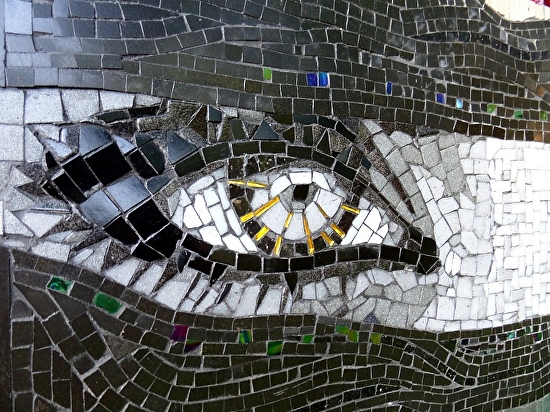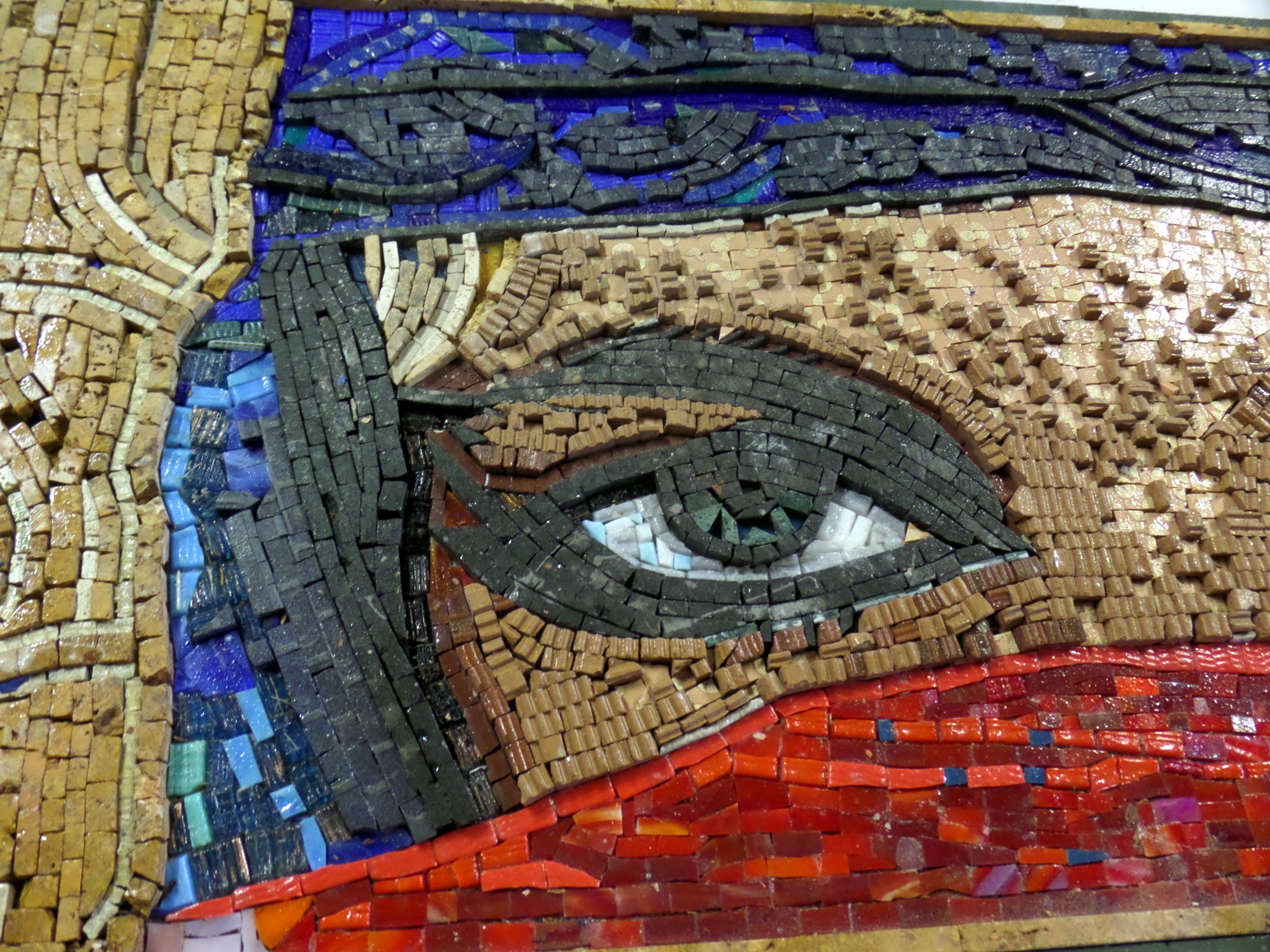Opus Tessellatum was the most commonly used technique in the production of Hellenistic, Roman, early Christian, and Byzantine mosaics. In this technique the mosaic is made from tesserae that larger than 4 mm. These tesserae are laid in lines following the contours of the pattern the artist wants to represent. In Opus Pixellatum, most tesserae are square. Hover some are shaped as trapeze or triangle to follow natural curves. Each tesserae has to be individually cut. Until 2015, I have worked almost exclusively in Opus Tessellatum.


